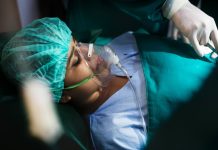
Migraine is one of the most disabling disorders, affecting one in seven people and causing a tremendous social and economic burden.
Several findings suggest that migraine is a disease affecting a large part of the central nervous system and characterized by a global dysfunction in sensory information processing and integration, which also occurs between migraine episodes (interictal period).
For example, patients with migraine exhibit increased cortical responses to sensory stimuli during the interictal period.
At present, the cellular mechanisms responsible for these alterations are largely unknown.
In a recent study from the University of Zurich and elsewhere, researchers found that a genetic dysfunction in specific brain cells of the cingulate cortex area strongly influences head pain occurrence.
This showed a new mechanism responsible for familial migraine.
The study is published in Science Advances. One author is Mirko Santello at the Institute of Pharmacology and Toxicology.
In the study, the team found a new mechanism implicated in a special form of migraine caused by a genetic mutation.
They reported that this familial hemiplegic migraine type 2 (FHM2) causes a malfunction of astrocytes in the cingulate cortex, a brain region that is involved in the feeling of pain.
Astrocytes, specific star-shaped brain cells, are essential contributors to neuronal function and have a strong impact on brain circuits and behavior.
These cells are extremely important to clear transmitters released by neurons.
The researchers were able to show that in familial migraine the astrocytes cannot remove excessive transmitters released by neurons.
Furthermore, the study reported that the malfunction of the cingulate cortex also influences migraine occurrence.
The team showed that the mice displayed increased sensitivity to head pain triggers. By manipulating astrocytes in the cingulate cortex, they were able to reverse the dysfunction.
This prevented an increase in head pain in mice carrying the genetic defect.
The results provide a clear example of how astrocyte dysfunction produced by a genetic defect affects neuronal activity and sensitivity to head pain triggers
The findings help to better understand migraine pathophysiology and suggest that the cingulate cortex may represent a critical hub in the disease.
The findings could help develop new migraine treatment strategies.
Copyright © 2020 Knowridge Science Report. All rights reserved.



